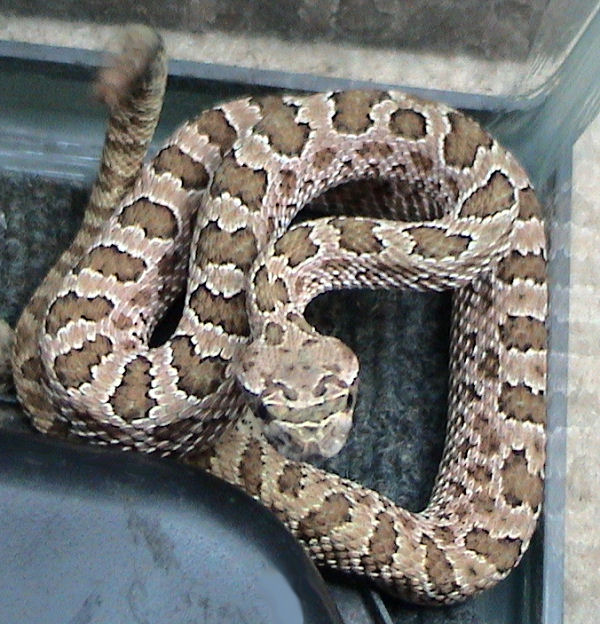 |
| Prairie Rattlesnake(Pit Viper) |
Fast Facts: Prairie rattlesnake
Species name: Crotalus viridis viridis
Average length: 89 cm to 114 cm
Life expectancy: 16-20 years
Did you know?
The prairie rattlesnake is the only venomous snake in the Canadian prairies.
Physiology

The Prairie Rattlesnake is a speciesof venomous pit vipers that are found in parts of Canada, Mexico and USA. They have two subspecies.
| Kingdom | Animalia |
| Phylum | Chordata |
| Subphylum | Vertebrata |
| Class | Reptilia |
| Order | Squamata |
| Suborder | Serpentes |
| Family | Viperidae |
| Subfamily | Crotalinae |
| Genus | Crotalus |
| Species | C. viridis |
| Scientific Name | Crotalusviridis |
Description
This species commonly grows to more than 100 cm (3.3 ft) in length. The maximum recorded size is 151.5 cm (4.97 ft). In Montana, specimens occasionally exceed 120 centimetres (3.9 ft) in length; the species reaches its maximum size in this region. One of the most characteristic features is the presence of three or more, usually four, internasal scales.
Coloration: Lightly coloration in hues of brown with patches of dark brown often spread across the body in a dorsal pattern.
Distribution
Native to western United States, southwestern Canada, and northern Mexico
Habitat
Dry areas with moderate vegetation coverage, rocky areas with outcrops, burrows of other animals
Diet
Ground squirrels, ground nesting birds, mice, rats, small rabbits and prairie dogs; also amphibians and reptiles, and sometimes even other snakes
Venom Fact
Venomous
Breeding Season
Spring
Clutch Size
1-25 depending upon the size of the female
Mode of Reproduction
Viviparous (gives birth to live young)
IUCN Conservation Status
Least Concern


Comments
Post a Comment